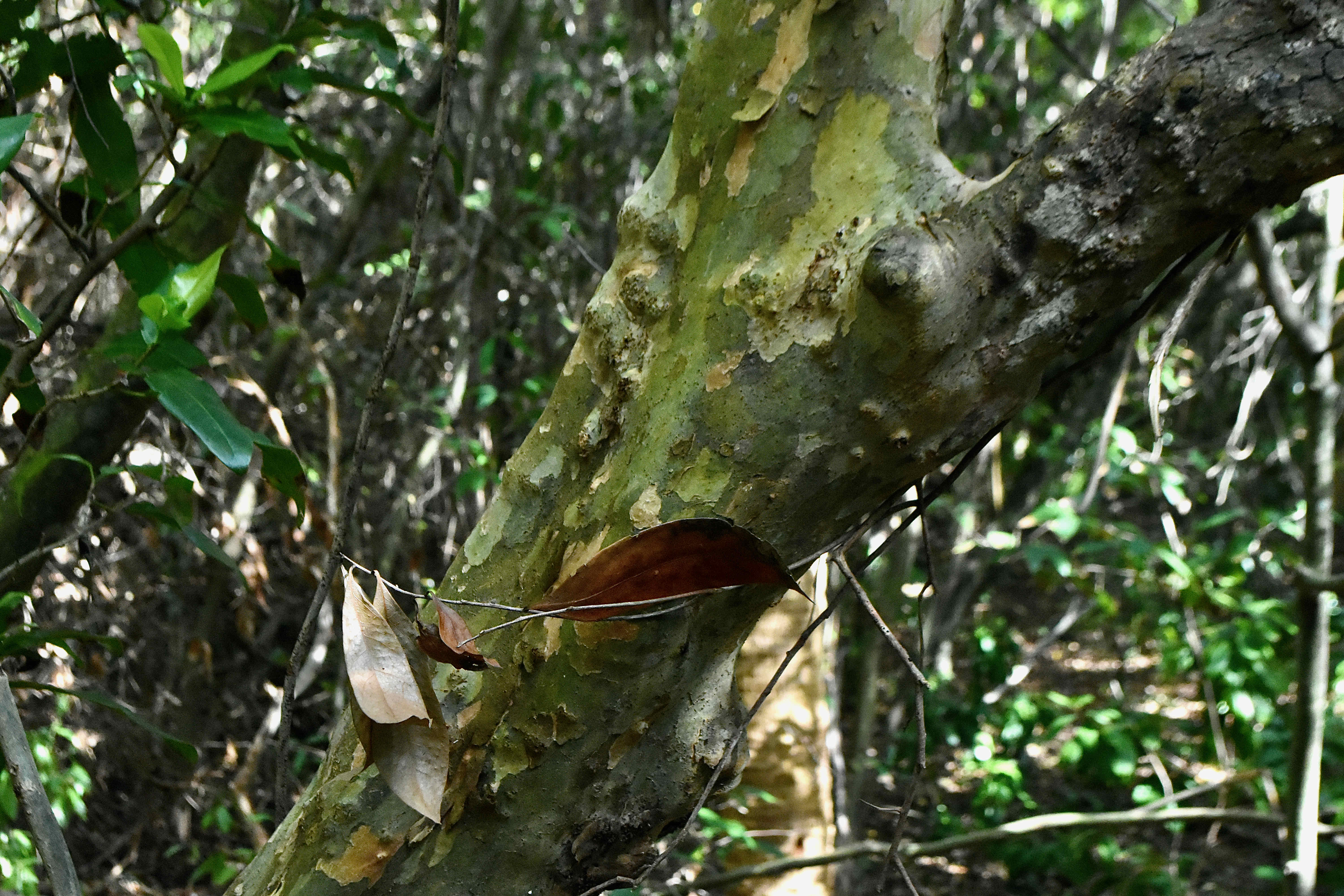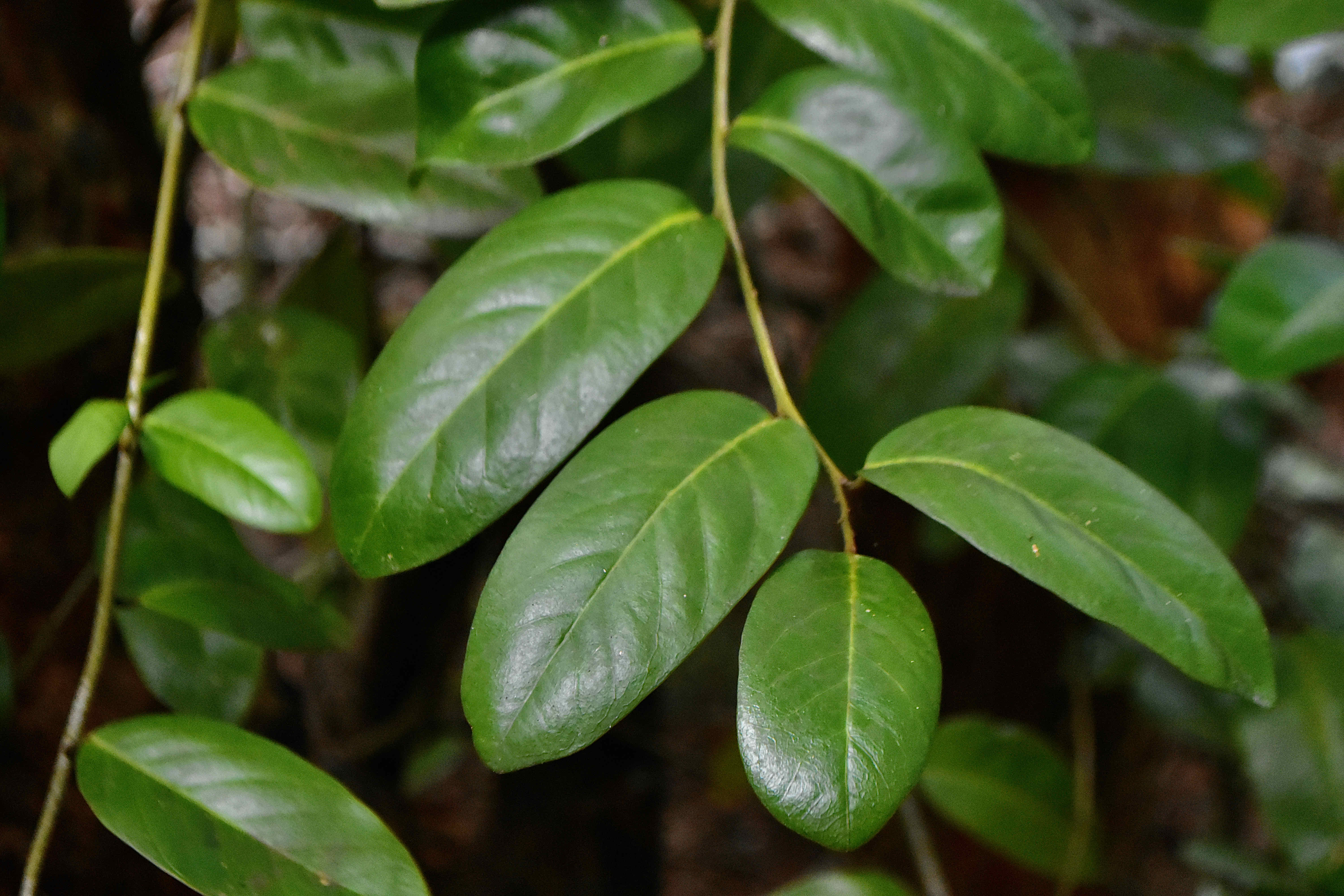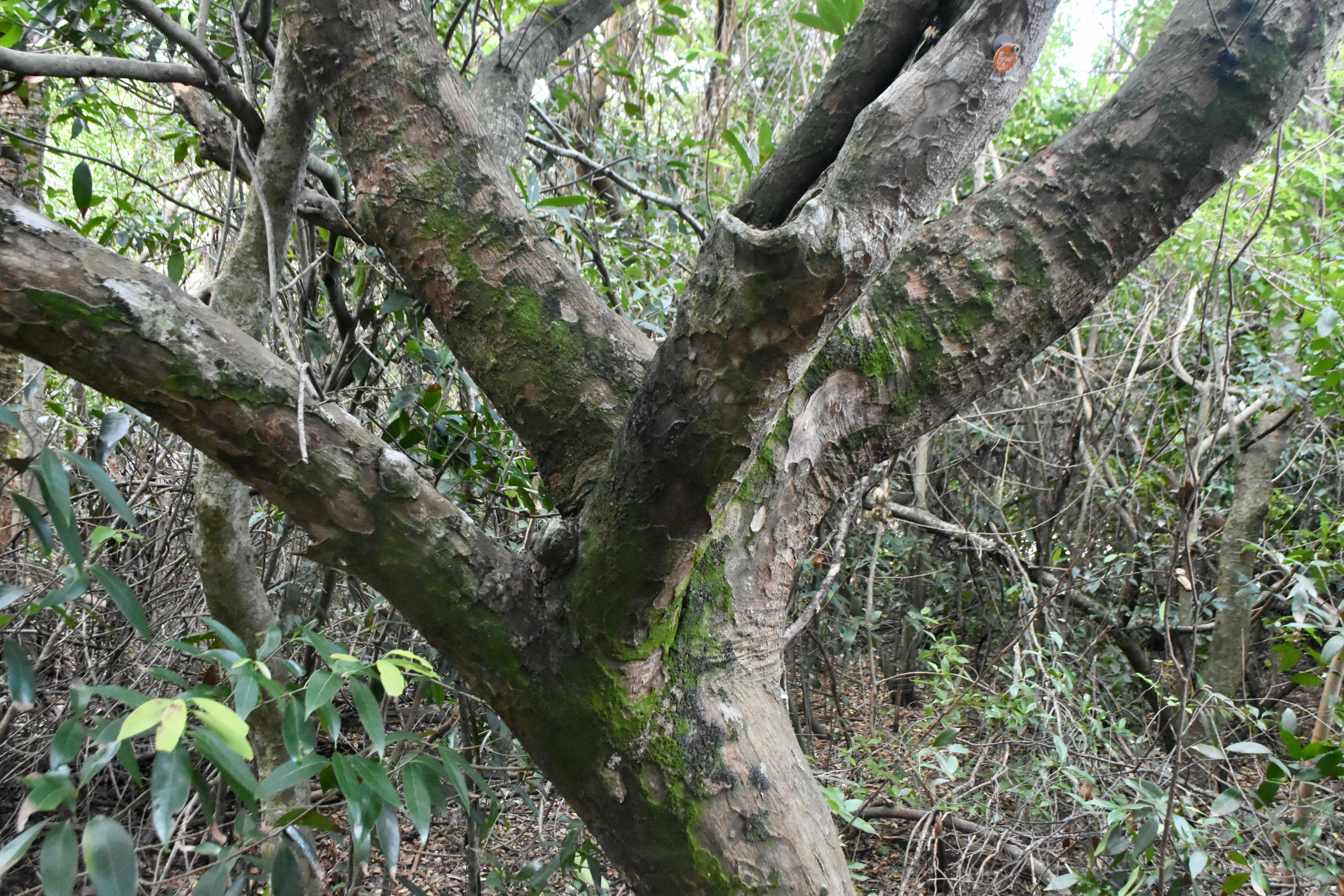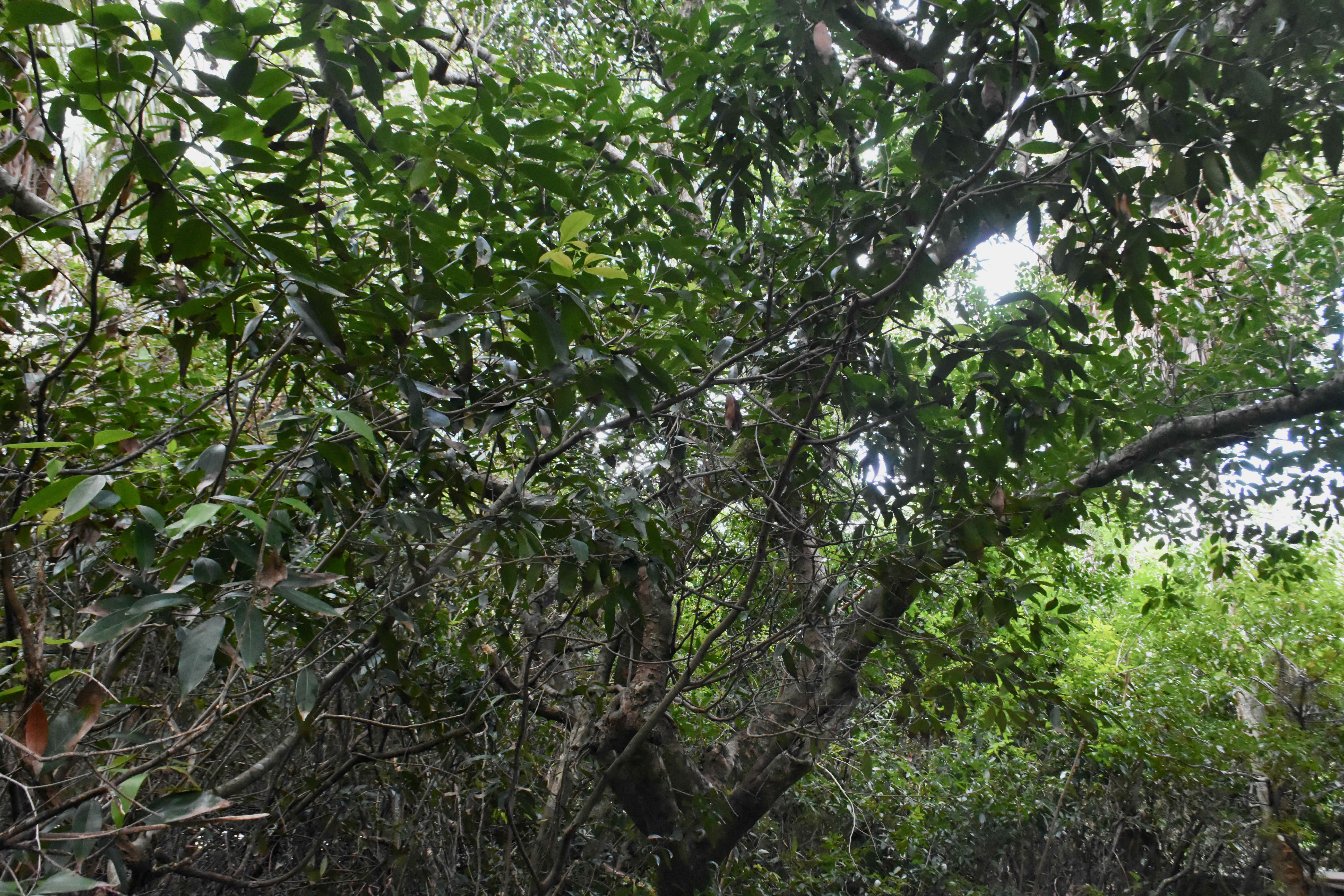
False mastic, photographed at Gumbo Limbo Nature Center, Boca Raton, Palm Beach County, in April 2022.
If you walk through a coastal hammock in South Florida and spot a large tree with a warty, funky-looking trunk, it’s probably this guy, false mastic, aka Sideroxylon foetidissum. Walk by it when it’s in bloom and its oddly odoriferous flowers will give it away.
But despite its peculiarities, false mastic is an extremely useful tree from a human standpoint. Its fruit is edible, the wood used in boat-building and it’s actually attractive enough to be used in landscaping. In parts of its range, indigenous folk think enough of the tree that they protect it where they find it growing wild so they can harvest the fruit.
False mastic is a Florida native, found only in Florida among the 50 states. Its range extends through the Caribbean, including the Bahamas, Cuba, Puerto Rico and the Virgin Island, Mexico, particularly the Yucatan Peninsula, and Central America.
In Florida, it’s found in coastal counties as far north as Volusia on the Atlantic side and Manatee on the Gulf. Favorite habitat: coastal hammocks.
It’s a medium to large tree, capable of hitting 80 feet tall — or more — and having a trunk three feet in diameter. It has an irregular crown between 30 and 50 feet wide. But the most recognizable physical characteristic of false mastic is the trunk and bark, marked with warty looking growths and flakey multi-hued bark — reds, greens, browns and grays — especially on mature trees.
Leaves are simple, yellowish green to dark green in color, shiny, elliptical to oblong in shape. The base can be rounded or sharp; the edges or margins are smooth but can be involute, or slightly curled downward, and undulate, or wavy. Leaves tend to cluster toward the end of branches.
False mastic blooms mainly in the spring, March to May. Flowers are yellow, inconspicuous and clustered along the branches. They also have a peculiar odor that some say is cheesy and some find rather unpleasant.
The fruit is yellow when ripe, olive-shaped, about an inch long with a single, large seed inside. It is edible by us human types; the late Florida Atlantic University Professor Daniel Austin said one of the names early Floridians gave the tree with jungle plum. Austin also said eating the fruit in large quanties can cause a burning sensation on the lips and upset the stomach.
False mastic fruit is eaten by some birds and a variety of mammals, including squirrels, foxes and raccoons.
False mastic wood is yellow, hard and dense — its genus name Sideroxylon translates to wood resembling iron, and one of its common names is mastic ironwood. Per Austin, it’s considered a “premier” wood for boat building in the Caribbean. It’s also used in building homes and bridges home construction, and in cabinet-making.
In South Florida, it’s used in landscaping as a specimen or a shade tree. It can be grown from seed, but plenty of patience is required because of the extensive time it takes to germinate.
A quick taxonomic note: you’ll see some references using Mastichodendron foetidissimum as the scientific name for false mastic, but it is no longer “accepted” by the scientific community. Other common names for false masitic include yellow mastic, wild mastic and just plain old mastic. It is a member of Sapotaceae, the sapodilla family.



